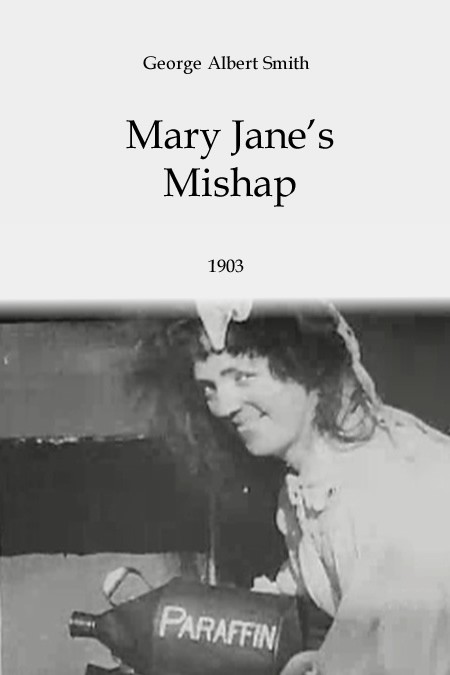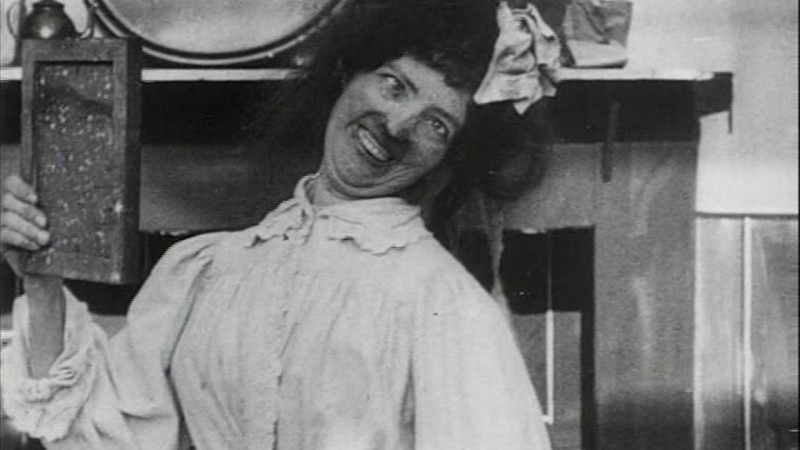Mary Jane’s Mishap

Mary Jane’s Mishap is definitely the George Albert Smith‘s masterpiece. The British film pioneer has used many of filming techniques known at that time, some he himself invented. First the wise mixture of wide shots and medium close-ups to narrow the field of view and emphasize some objects and details of the scene, as well as the protagonist’s expression (in the movie, the main character Mary Jane was played by his wife Laura Bayley). We see one of the first, if not the first example ever, of an editing technique called Axial cut; a cut made on the same imaginary axis between the subject and the camera; only the distance changes.
But Smith was not limited to this and added some special effects as fades and superimposition. From a narrative point of view, the film is even more interesting. It begins as a comedy to flow in a tragedy with the death of Mary Jane, who, after the paraffin explosion, is ejected by the fireplace and her pieces are scattered on the roofs of houses around. In the end, just to add a touch of paranormal horror to macabre and splatter, Mary Jane reappears as a ghost thanks to the trick of superimposition.
The film critic John Barnes described the film as “the first modern film” and he continue “far ahead of its time as regards film technique”. And he had good reasons to say it.
